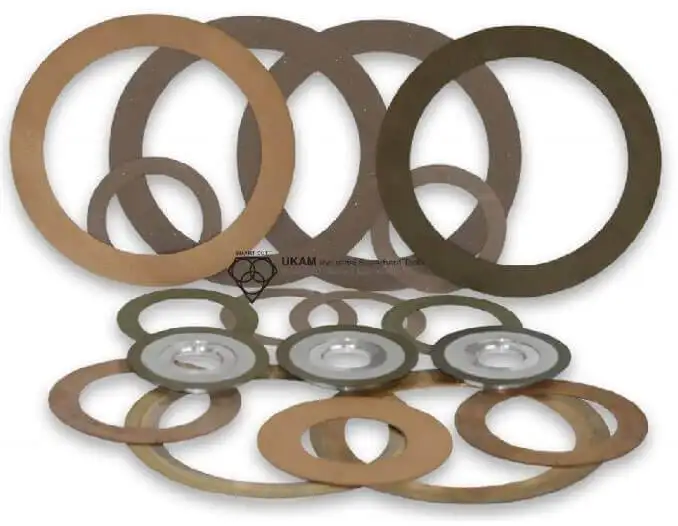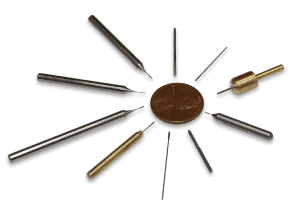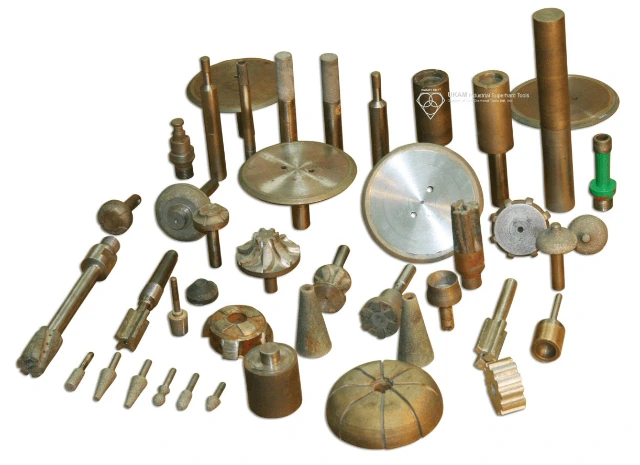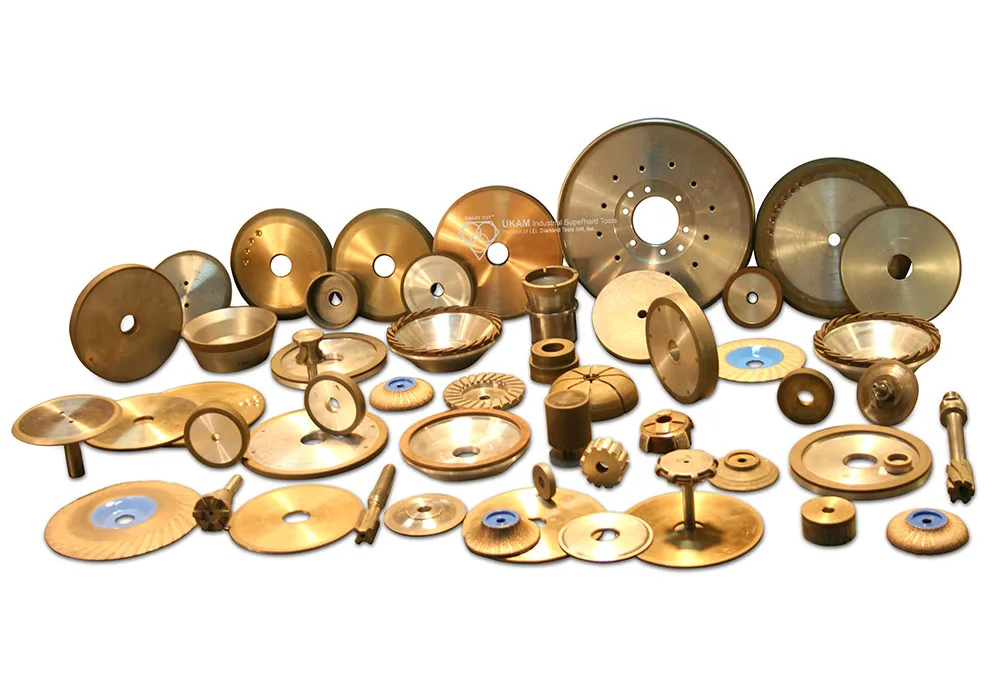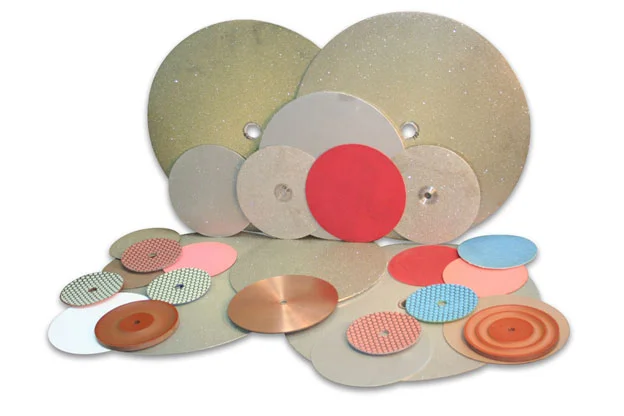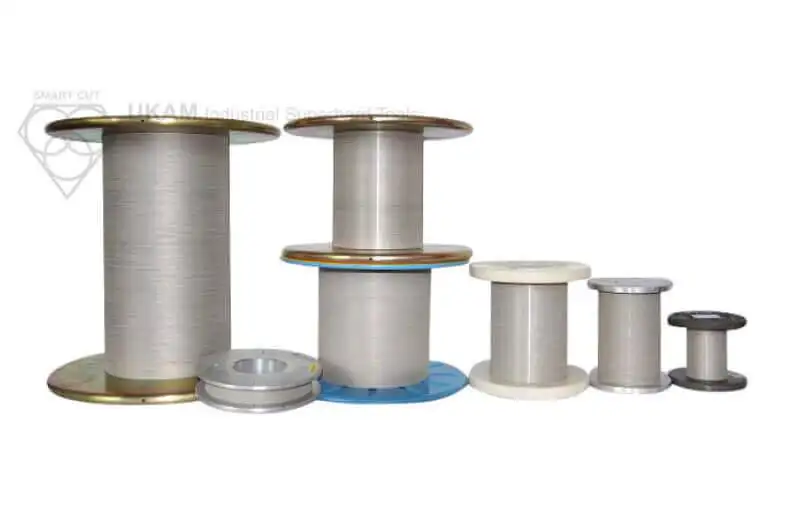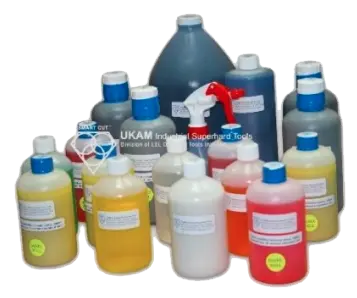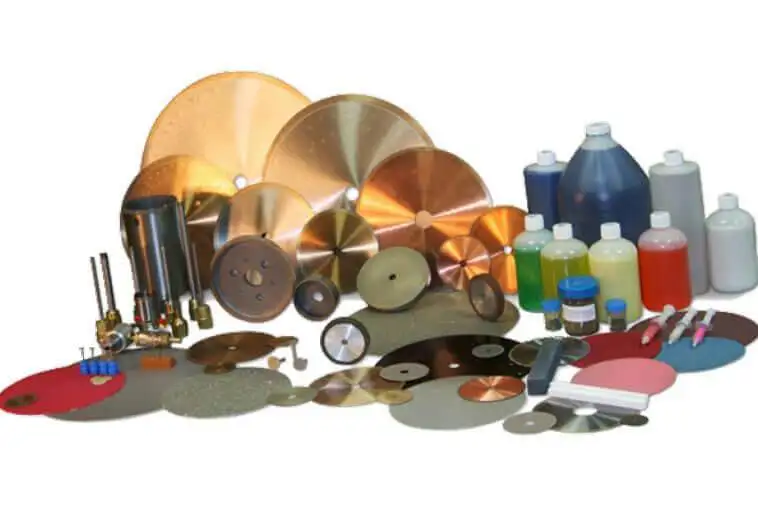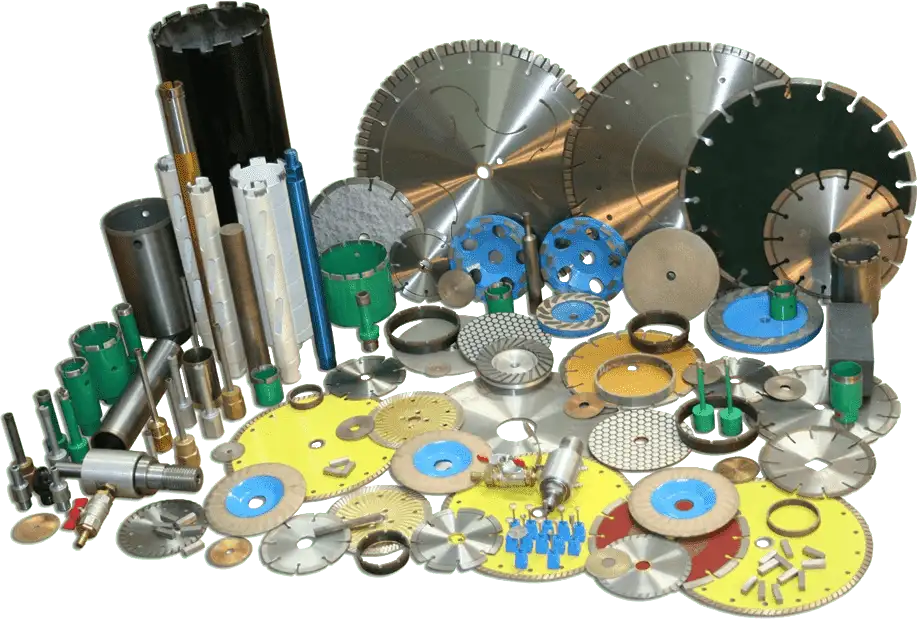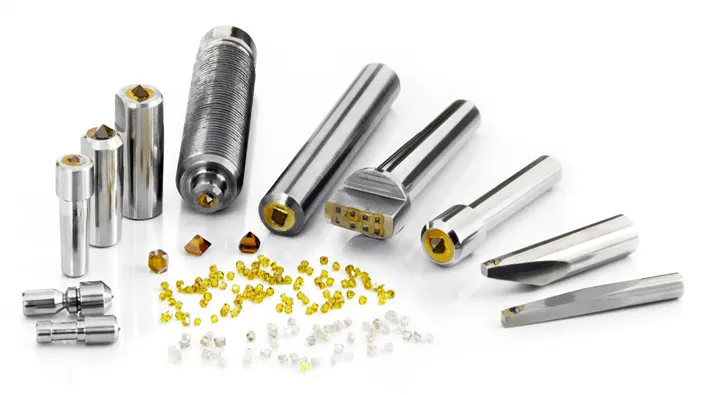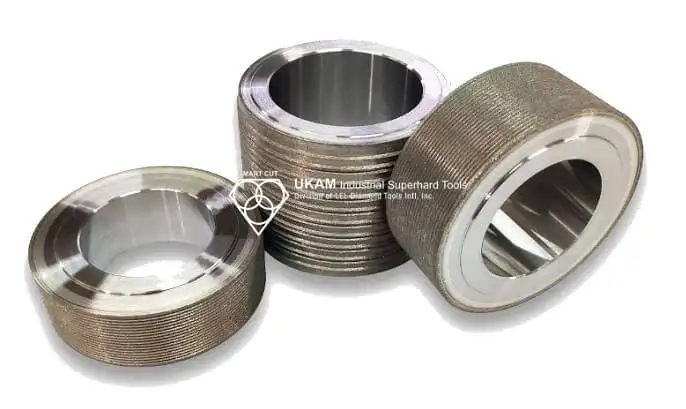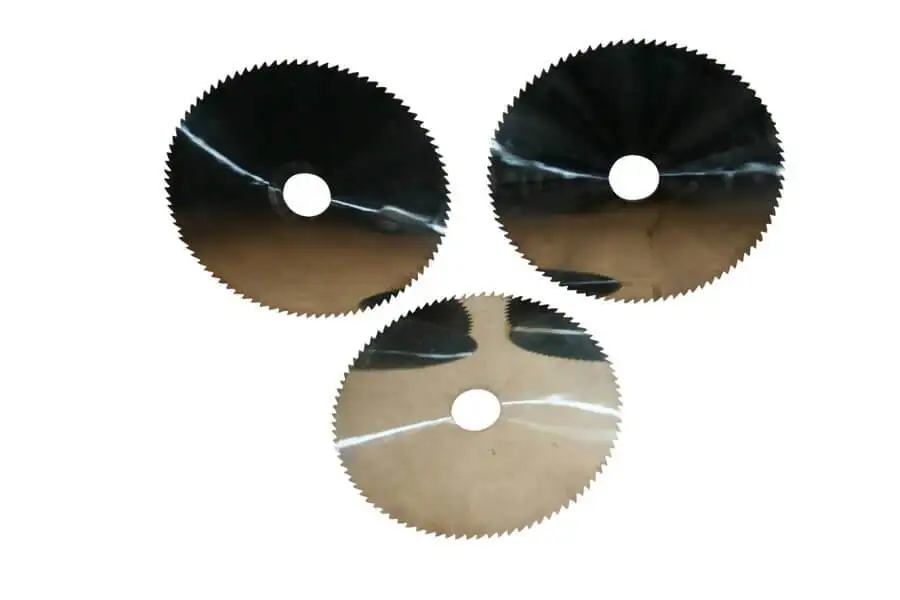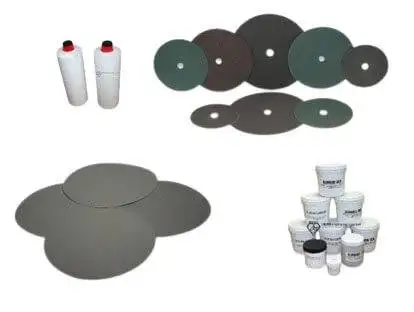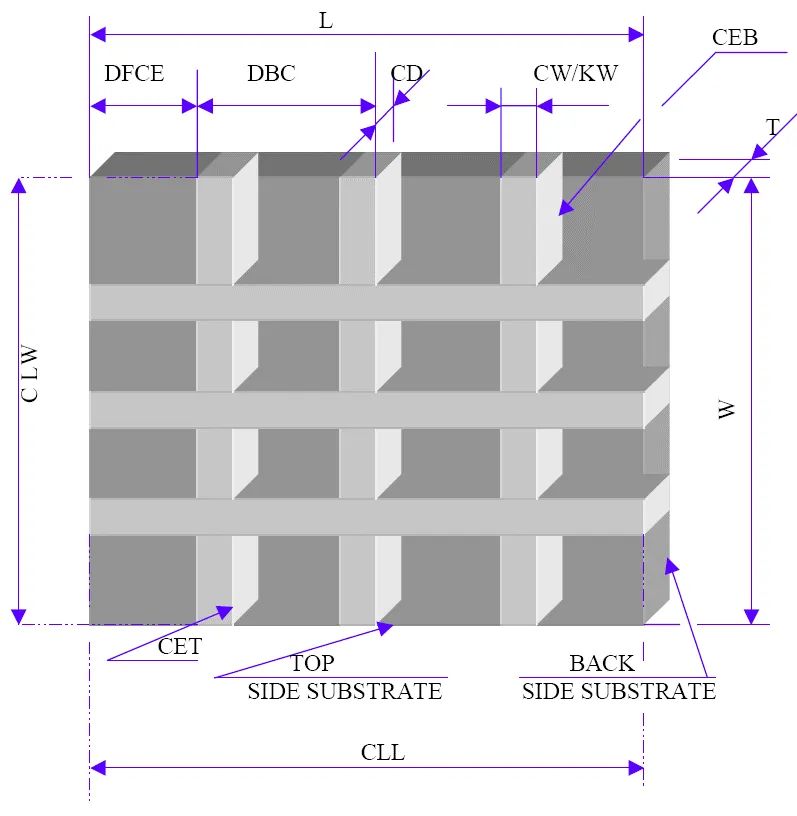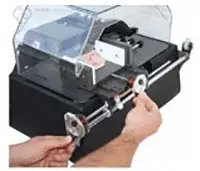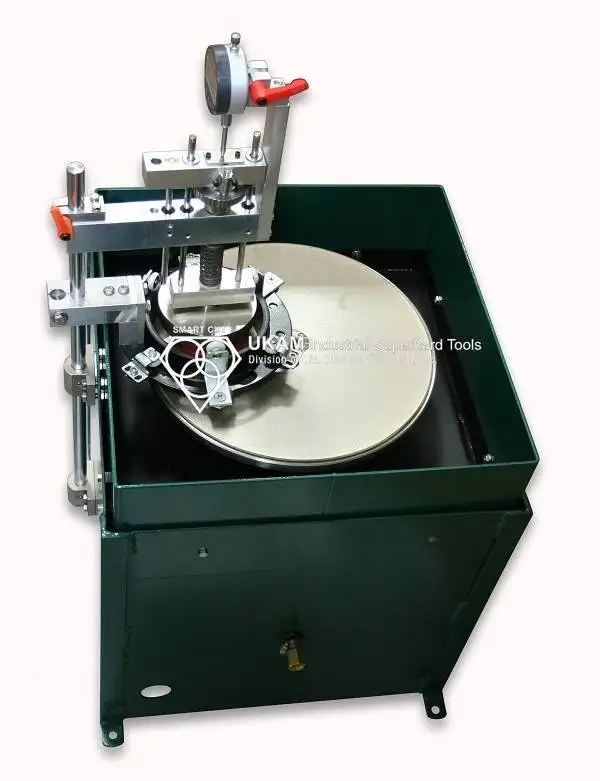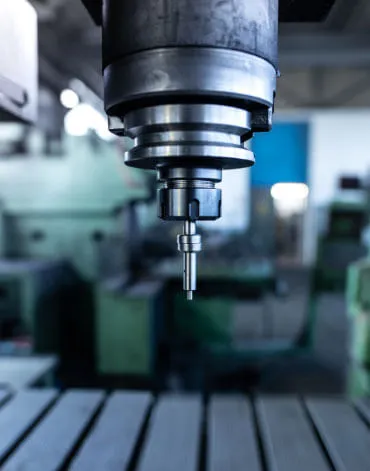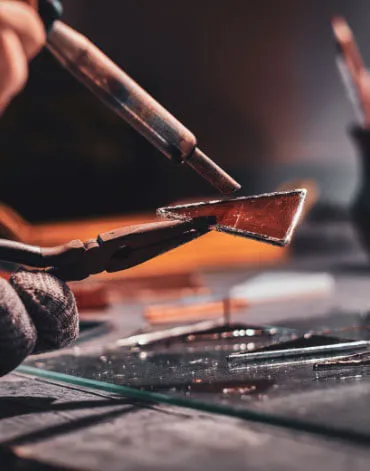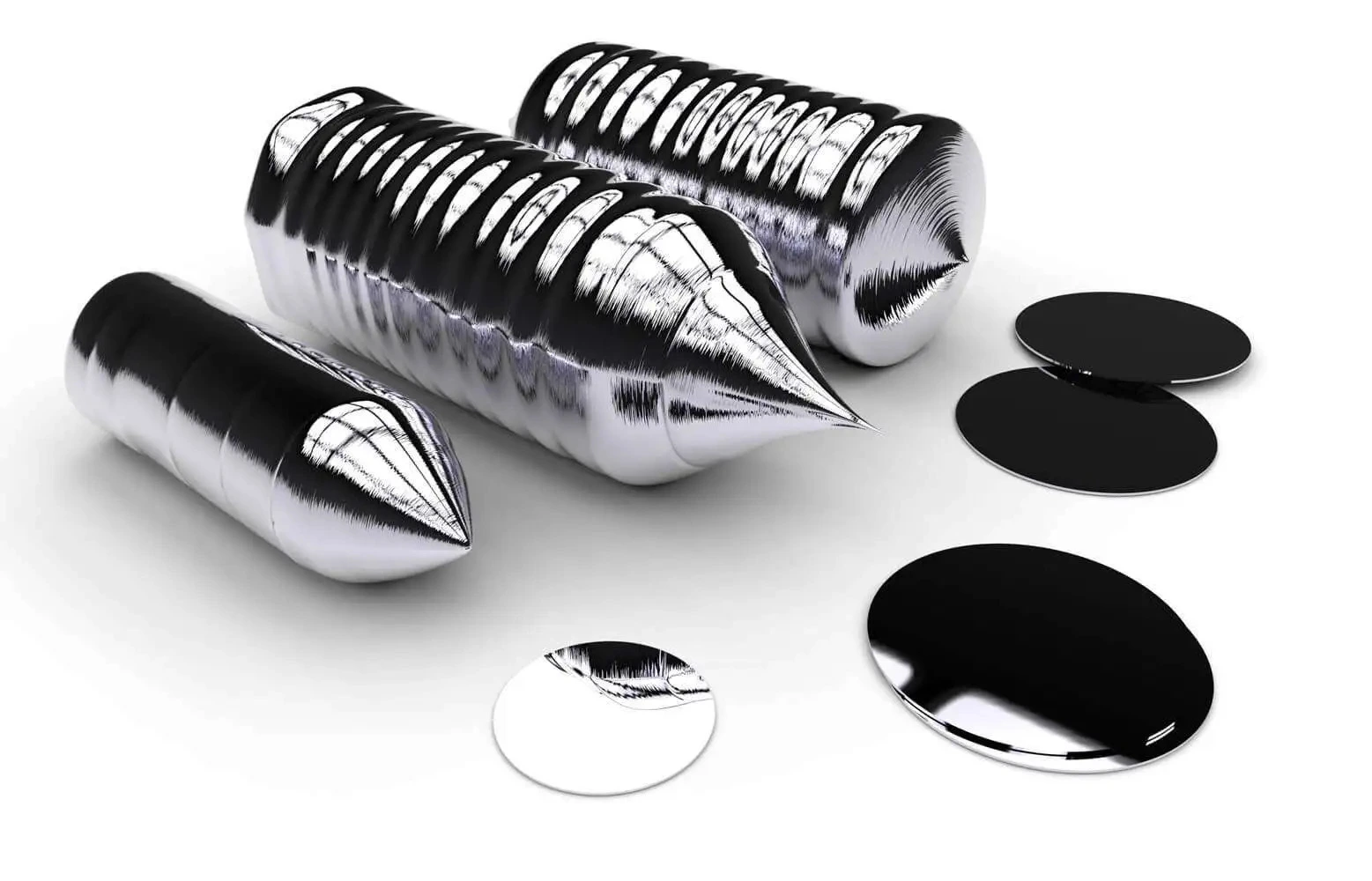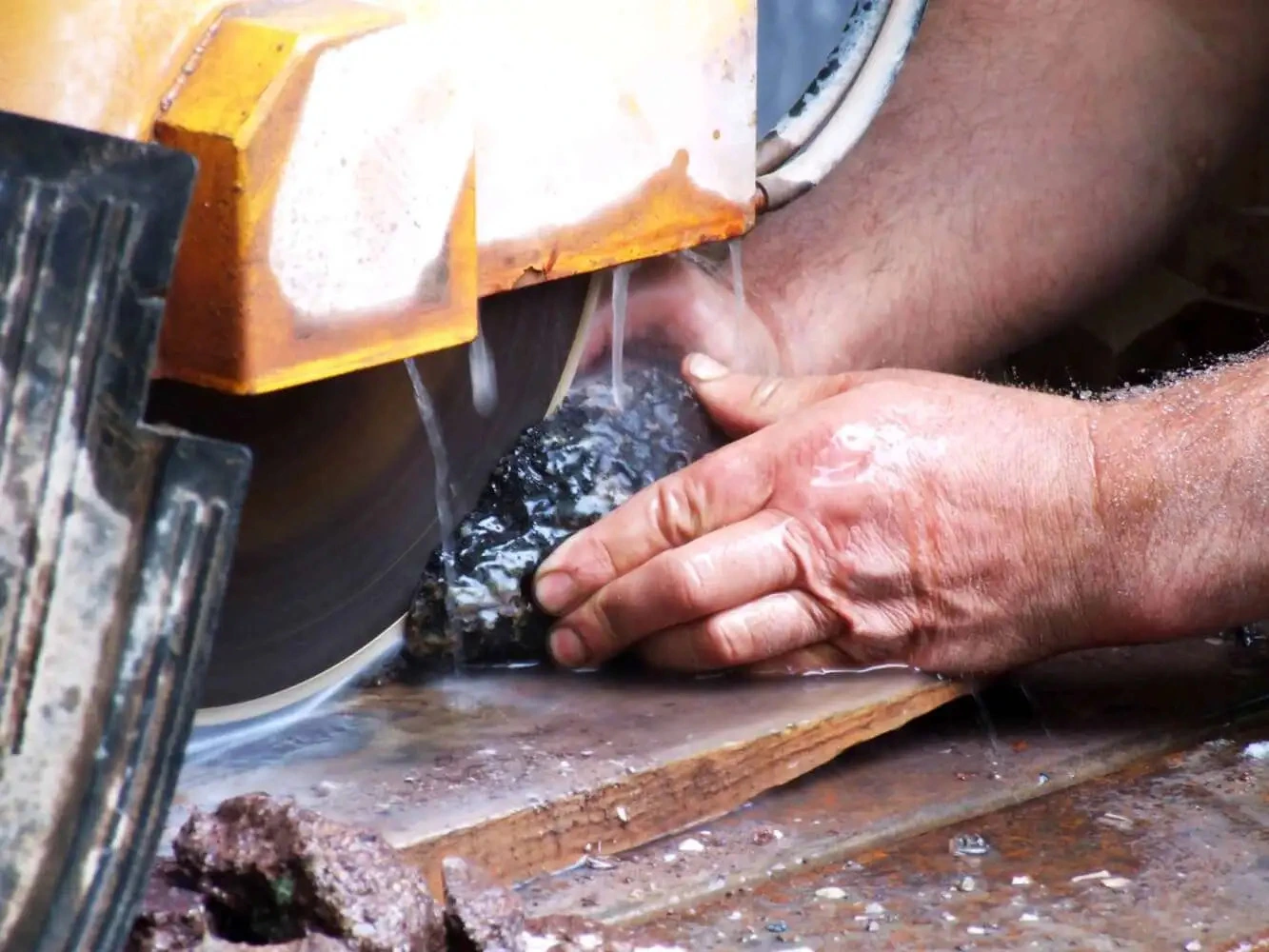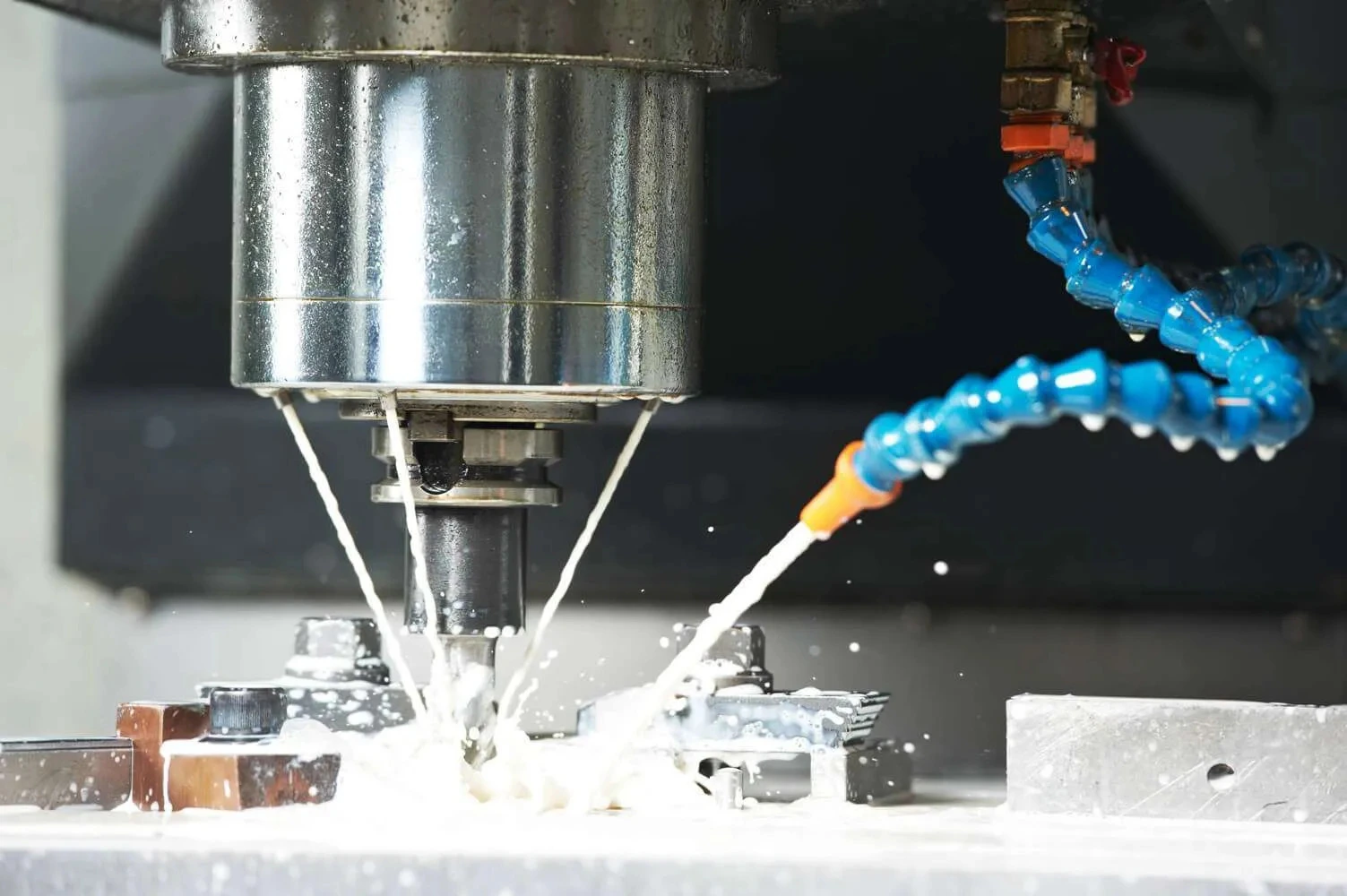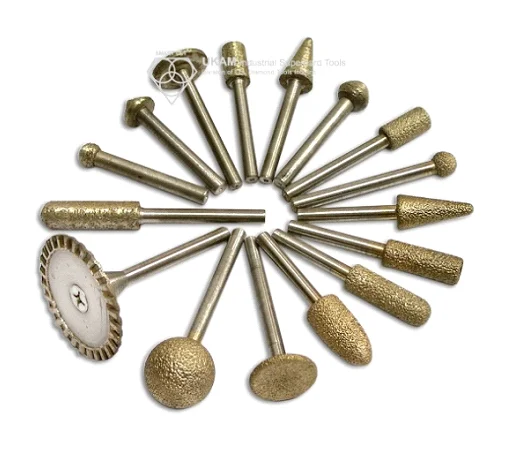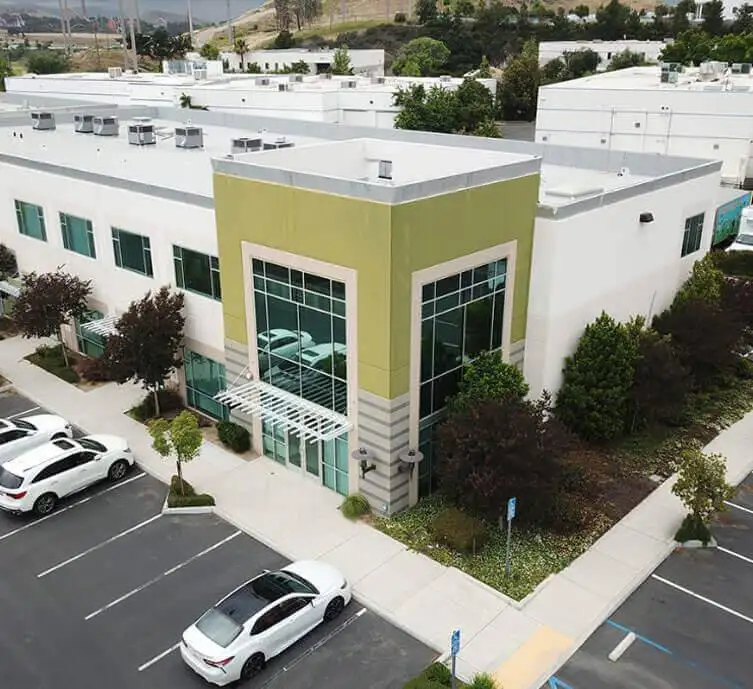|
SHORT WHEEL LIFE 
Signs: Wheels worn out in a very short period of time compared to normal life span |
- Excessive force on the wheel
- Wheel grit is too fine for the application
- Poor coolant quality or flow
- Improper wheel storage leading to degradation
|
- Reduce the feed rate or depth of cut to lessen the load on the wheel.
- Choose a coarser grit that can withstand the workload.
- Improve coolant concentration and flow; ensure the coolant system is not clogged.
- Store wheels in a dry, temperature-controlled environment to prevent deterioration.
|
|
MATERIAL BURNING 
Signs: Discoloration of the surface |
- Too high wheel speed or too deep a cut
- Insufficient coolant
- Inappropriate wheel bond for the material
- Overly aggressive dressing leading to excessive wheel sharpness
|
- Decrease wheel speed and cut depth.
- Check coolant delivery and increase flow rate.
- Use a wheel with a bond type suited to the material being ground.
- Adjust the dressing parameters to ensure the correct balance between sharpness and strength of the wheel.
|
|
DIFFICULTY OF ACHIEVING PRECISON TOLERANCES 
|
- Machine tool wear or lack of stability
- Inconsistent wheel dressing or wear
- Environmental changes affecting machine dimensions or workpiece material
- Wheel is too soft and wears quickly, changing the geometry
|
- Service machine to repair or replace worn components, ensure stability in the setup.
- Use a consistent and precise dressing routine.
- Control temperature and humidity in the grinding area to maintain consistent conditions.
- Select a harder wheel that maintains its shape better for precision grinding.
|
DIFFICULTY DRESSING
 |
- Diamond dresser is worn or improperly set
- Wheel bond is too hard or abrasive is too tough
- Insufficient coolant during dressing
- Incorrect dressing parameters
|
- Replace the diamond dresser if worn and ensure it is properly set.
- Use a more appropriate dressing tool with suitable properties to effectively dress the wheel.
- Provide adequate coolant flow during the dressing process to keep the diamond dresser cool and effective.
- Adjust the speed, feed rates, and depth of dressing cuts to match the requirements of the wheel.
|
WHEEL DOES NOT MAINTAIN PROFILE
 |
- Wheel bond is too soft, leading to rapid wear
- Inadequate machine rigidity or vibrations
- Incorrect dressing tool or technique
- Wheel exposure to temperature variations or humidity
|
- Use a harder bonded wheel to maintain profile shape over longer periods.
- Strengthen the machine setup to reduce vibrations and increase rigidity.
- Ensure the dressing tool and technique used are capable of effectively maintaining the wheel profile.
- Maintain a consistent environment to prevent wheel shape distortion.
|
|
PREMATURE DIAMOND FRACTURE 
|
- Too much pressure during grinding or dressing
- Wheel speed is too high
- Vibration or impact during use maintaining the wheel profile.
|
- Reduce the infeed rate and optimize dressing pressure.
- Lower the wheel speed to prevent excessive force on the diamond particles.
- Eliminate sources of vibration and handle the wheel carefully to avoid impacts.
|
|
WHEEL GLAZING & LOADING 
|
- Bond too hard for the material
- Insufficient coolant
- Wheel operating speed too low
- Inappropriate dressing strategy
|
- Use a wheel with a softer bond to allow new grains to be exposed more readily.
- Increase coolant flow and ensure the nozzle is correctly positioned to target the grinding zone.
- Increase the wheel speed within safe operating limits to improve cutting efficiency.
- Adjust dressing parameters, such as tool type, feed rates, and speeds to be more aggressive and expose fresh abrasive.
|
|
WHEEL BREAKAGE 
|
- Wheel dropped or damaged during handling
- Over-speeding beyond the maximum RPM
- Thermal or mechanical shock
- Incorrect mounting or tightening
|
- Handle wheels with care, use protective covers, and store them properly to avoid drops or impacts.
- Never exceed the maximum RPM listed for the wheel. Always check machine settings before starting operations.
- Avoid drastic temperature changes and ensure gentle engagement during grinding to prevent shocks.
- Follow the manufacturer’s guidelines for correct mounting and use the proper flanges and tightening procedures.
|
|
POOR SURFACE FINISH 
|
- Wheel is too coarse
- Inadequate or improper dressing
- Wheel imbalance
- Vibration from machine or environment
|
- Select a wheel with a finer grit to achieve a better surface finish.
- Dress the wheel more frequently with the correct technique to ensure it presents the finest possible abrasive surface to the workpiece.
- Balance the wheel properly on a balancing stand and ensure it is re-checked regularly.
- Isolate the machine from external vibrations and check for any worn parts or instability in the machine itself.
|
|
MATERIAL WARIPING 
|
- Uneven cooling or excessive heat during grinding
- Inappropriate handling after grinding
- Non-uniform material removal
- Uneven fixture or clamping pressure
|
- Ensure uniform cooling and consider using coolants with better heat dissipation properties.
- Handle the workpiece gently post-grinding to avoid warping due to residual stresses.
- Use consistent grinding practices and check for wheel balance and dressing regularity to ensure uniform material removal.
- Check fixtures and clamping mechanisms to apply even pressure without distorting the workpiece.
|
|
WHEEL LOADING / MATERIAL STICKING 
|
- Inadequate coolant flow or type
- Grinding parameters too aggressive
- Wheel bond too hard for the material
- Contamination in the coolant system
|
- Increase the coolant flow, improve nozzle placement, or switch to a coolant better suited for the material being ground.
- Adjust the grinding parameters (e.g., reduce speed, feed rate) to prevent material from adhering to the wheel.
- Switch to a wheel with a softer bond to improve self-sharpening action.
- Clean the coolant system thoroughly and maintain coolant quality.
|
|
DIAMOND WHEEL SPINDLE INTERFACE ISSUES 
|
- Wheel flanges are not properly torqued or aligned
- Spindle or adapter damage
- Incorrect wheel adapter size
- Accumulation of dust and debris at the interface
|
- Torque flanges to specifications and ensure alignment is correct.
- Inspect the spindle and adapter for damage and wear; service or replace as needed.
- Use the correct wheel adapter for the specific wheel size and type.
- Clean the spindle and wheel bore before mounting to ensure a clean mating surface.
|
|
POOR FINISH OR SCRATCH ON MATEIRAL 
|
- Wheel is contaminated with foreign material
- Inadequate dressing of the wheel
- Swarf or chips not being effectively cleared
- Workpiece or wheel vibration
|
- Clean the wheel using a wheel cleaner or a dressing stick to remove contaminants.
- Increase the frequency and/or aggressiveness of dressing to ensure the wheel surface is clean and sharp.
- Enhance the coolant flow and direction to ensure swarf is being cleared from the work area.
- Check for and eliminate sources of vibration. Balance the wheel and ensure workpiece stability.
|
|
EXCESSIVE POWER CONSUMPTION 
|
- Wheel is too hard or too dull
- Excessive force during grinding
- Machine alignment or mechanical issues
- Motor or drive system inefficiencies
|
- Use a softer or sharper wheel, or adjust dressing to maintain sharpness.
- Decrease the feed rate or depth of cut to reduce resistance.
- Check machine alignment and address any mechanical issues.
- Service the motor or drive system to ensure they are running efficiently.
|
|
INCONSISTENT WHEEL PERFORMANCE

|
- Variability in coolant supply or temperature
- Inconsistent dressing cycles or technique
- Fluctuations in power supply
- Changes in environmental conditions around the machine (temperature, humidity)
|
- Monitor and stabilize coolant supply and temperature to maintain consistent performance.
- Standardize dressing routines and ensure they are followed consistently.
- Install power conditioners or uninterrupted power supplies to regulate the input power.
- Control the environmental conditions in the grinding area to minimize their impact on the process.
|
DRESSING WHEEL WEARS OUT QUICKLY
 |
- Excessive dressing pressure or speed
- Dressing wheel not suitable for the diamond/CBN wheel
- Diamond/CBN wheel bond too hard
- Contamination or glazing on diamond/CBN wheel
|
- Adjust the dressing pressure or speed to more moderate levels to extend the life of the dressing wheel.
- Use a dressing wheel appropriate for the hardness and grit of the diamond/CBN wheel.
- Use a softer bonded grinding wheel that requires less aggressive dressing.
- Clean and dress the wheel more frequently to prevent contamination build-up.
|
|
OUT OF ROUND WHEEL 
|
- Wheel has been dropped or mishandled
- Improper mounting or balancing
- Spindle or arbor runout
- Uneven dressing
|
- Inspect for damage and replace if necessary. Always handle with care.
- Ensure wheel is mounted and balanced according to manufacturer's specifications.
- Check and correct spindle or arbor runout to within acceptable limits.
- Employ consistent and even dressing techniques. Use a high-quality dresser and make sure it's applied uniformly across the wheel's surface.
|
|
MATERIAL CHATTER MARKS 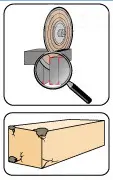
|
- Wheel imbalance
- Loose or worn spindle bearings
- Inadequate machine rigidity
- Incompatible wheel specification for the workpiece material and grinding operation
|
- Rebalance the wheel; check that wheel hubs and flanges are clean and flat.
- Inspect and replace spindle bearings if needed.
- Reinforce the machine setup; check for any components that need tightening or replacement.
- Choose a wheel with the right specifications for the material and operation.
|
|
DRESSING WHEEL LIFE IS SHORT 
|
- Incorrect dressing tool material for the wheel
- Excessive pressure during dressing
- Dressing tool speed is too high
- Inadequate coolant during dressing
|
- Use a dressing tool material that is harder and more wear-resistant, suitable for the wheel type.
- Dress at lower pressures and increase the contact time if necessary.
- Adjust the dressing tool speed to be appropriate for the diamond/CBN wheel.
- Ensure an ample supply of coolant during the dressing process to prevent overheating and wear on the tool.
|
|
MATERIAL DISCOLORATION 
|
- Too much heat generation during grinding
- Wheel speeds and feeds too aggressive
- Insufficient dressing leading to dull wheels
- Contaminated coolant or inadequate coolant type
|
- Improve coolant flow and use a wheel with more suitable bond strength and grain size to reduce heat.
- Adjust the grinding parameters to be less aggressive and prevent overheating.
- Increase the frequency of dressing to ensure the wheel stays sharp and efficient.
- Use the correct type of coolant and maintain its cleanliness to ensure proper temperature management during grinding.
|
|
MATERIAL MICRO CRACKS 
|
- Excessive grinding pressure
- Wheel too hard or too fine
- Poor coolant direction or flow
- High-speed grinding without adequate cooling
|
- Reduce infeed rates and/or adjust the traverse speed to minimize pressure.
- Use a softer or coarser wheel to minimize sub-surface damage.
- Optimize coolant delivery to directly target the grinding zone and improve cooling.
- Adjust the grinding speed to match coolant capabilities or improve the coolant system.
|
|
DIAMOND OR CBN WHEEL EXHIBITS UNUSUAL WEAR 
|
- Misalignment of the wheel to the workpiece
- Unstable workpiece holding or clamping
- Wheel grade too soft for the application
- Presence of abrasive particles between wheel and workpiece
|
- Align the wheel correctly to the workpiece to ensure even wear.
- Check and improve the workholding setup to ensure stability during grinding.
- Select a wheel with the appropriate grade and bond strength for the material and grinding conditions.
- Clean the surface of the wheel and the workpiece thoroughly to remove any abrasive particles.
|
|
Uneven wear on the wheel's face 
|
- Non-uniform dressing
- Workpiece geometry causing uneven pressure
- Inconsistent workpiece hardness
- Coolant not reaching all areas of the grinding zone
|
- Dress the wheel evenly and properly, ensuring consistent contact across the wheel's face.
- Adjust workpiece clamping and support to distribute pressure evenly.
- Pre-check workpiece material for uniformity before grinding.
- Redirect coolant flow or use multiple nozzles to cover the entire grinding zone evenly.
|
|
WHEEL DOES NOT CUT EFFECTIVELY 
|
- Glazed or loaded wheel
- Wheel bond too hard
- Insufficient horsepower or torque from the machine
- Wrong wheel specification for the material
|
- Dress the wheel to expose new abrasive grains. Increase dressing frequency.
- Use a wheel with a softer bond to allow for easier grain breakout.
- Check machine capabilities to ensure it is suitable for the operation. Consider a more powerful machine if necessary.
- Match the wheel type and specifications to the material being ground.
|
|
DIAMOND / CBN LAYER COMING OFF 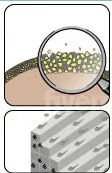
|
- High impact or shock to the wheel
- Excessive heat generation
- Poor wheel quality or manufacturing defects
- Incorrect storage leading to thermal stress
|
- Avoid dropping or hitting the wheel. Ensure smooth engagement with the workpiece.
- Optimize coolant flow and grinding parameters to reduce heat.
- Inspect wheels before use and only purchase from reputable suppliers.
- Store wheels in a stable and controlled environment to avoid temperature fluctuations.
|
|
MACHINE VIBRATION AFFECTING FINISH 
|
- Unbalanced wheel
- Loose machine components
- Worn or faulty machinery
- External environmental vibrations
|
- Balance the wheel on a balancing stand before mounting.
- Inspect and tighten all machine components, including fixtures, tooling, and workholding devices.
- Service or replace machine parts that are worn or malfunctioning.
- Isolate the machine from other equipment and external sources of vibration. Use anti-vibration mounts if necessary.
|
|
DUST OR DEBRIS CONTAMINATION 
|
- Inadequate dust extraction system
- Open windows or doors causing drafts
- Operators not following clean working practices
- Nearby operations creating debris
|
- Ensure the dust extraction system is working effectively and is properly positioned.
- Minimize air movement around the grinding area by closing windows and doors.
- Enforce clean working practices; use covers for machines when not in use.
- Isolate grinding operations from other work that generates dust or debris.
|
 Brian Farberov
Brian Farberov









